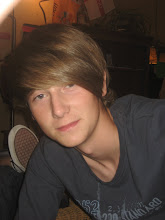Due to nature of short films there isn't much time for the director to establish a narative through dialouge and storyline. As a result the director is forced to use elements of camera, editing, diegetic sound and mise-en-scene. Therefore I plan to take these technical elements and use them effectivley to establish a narrative. My narrative will be constructed using a combination of cinematography styles, editing pace and mise-en-scene (in particular lighting).
When I was creating my AS piece of coursework developing a narrative wasn't key to the brief as a result I plan to look closer at this element in my A2 coursework.
A feature length film would follow a traditional linear narrative similar to Todrov's narrative theory in which there is an equilibrium - disequilibrium - re-equilibrium (www.scribd.com/doc/8332523/Narrative-theory-notes).
However due to the nature of short films it would be difficult to establish each of these elements effectively. As a result I will use Barthes' enigma code to convey narrative. This is the idea that the media presents a series of mysteries and clues which must be unravelled by the audience at the end of then text. (http://wiki.answers.com/Q/What_is_Barthes'_Enigma_code). This theory allows me to convey a narrative through the camera rather than dialogue which is suited more to short films.





